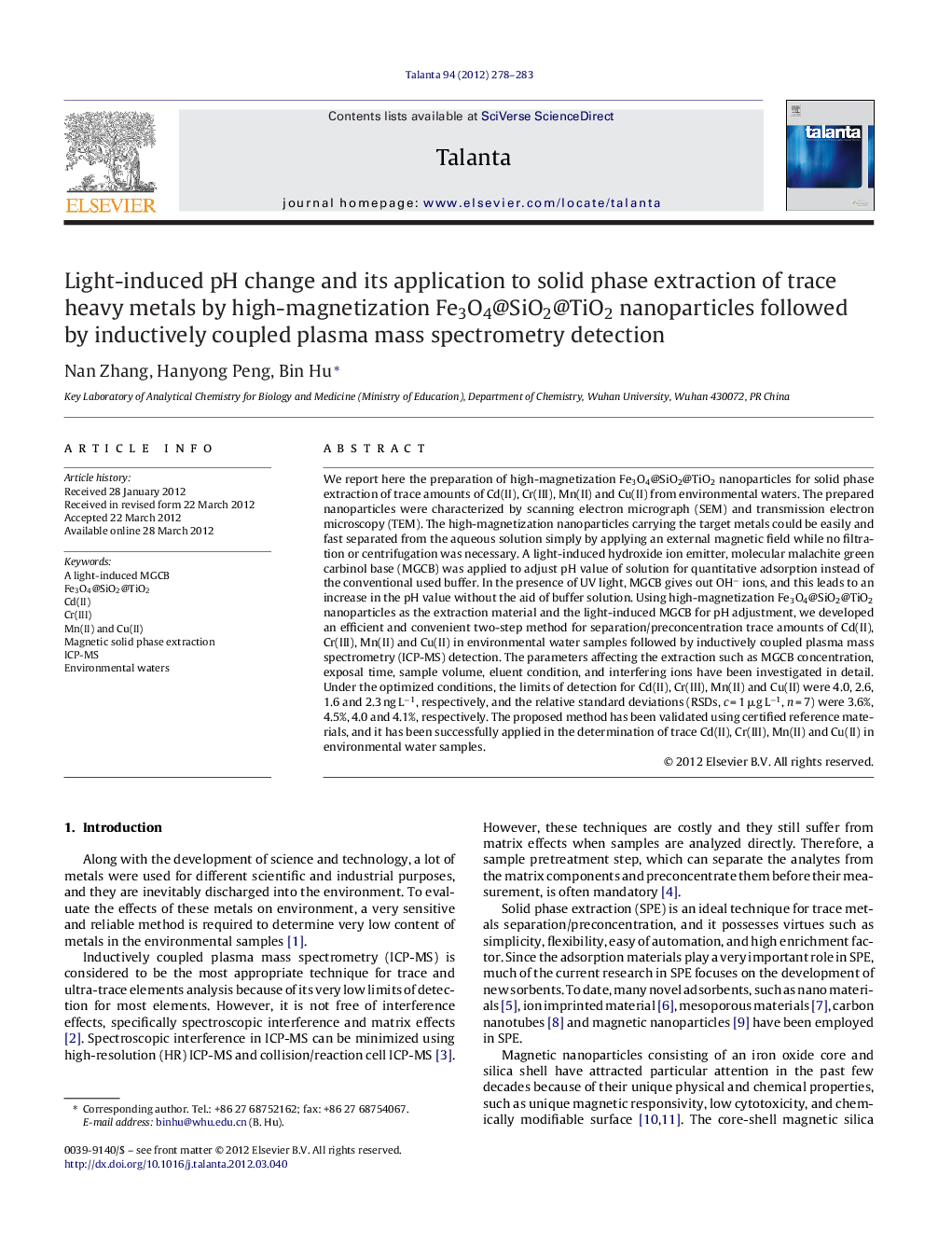| Article ID | Journal | Published Year | Pages | File Type |
|---|---|---|---|---|
| 1245648 | Talanta | 2012 | 6 Pages |
We report here the preparation of high-magnetization Fe3O4@SiO2@TiO2 nanoparticles for solid phase extraction of trace amounts of Cd(II), Cr(III), Mn(II) and Cu(II) from environmental waters. The prepared nanoparticles were characterized by scanning electron micrograph (SEM) and transmission electron microscopy (TEM). The high-magnetization nanoparticles carrying the target metals could be easily and fast separated from the aqueous solution simply by applying an external magnetic field while no filtration or centrifugation was necessary. A light-induced hydroxide ion emitter, molecular malachite green carbinol base (MGCB) was applied to adjust pH value of solution for quantitative adsorption instead of the conventional used buffer. In the presence of UV light, MGCB gives out OH− ions, and this leads to an increase in the pH value without the aid of buffer solution. Using high-magnetization Fe3O4@SiO2@TiO2 nanoparticles as the extraction material and the light-induced MGCB for pH adjustment, we developed an efficient and convenient two-step method for separation/preconcentration trace amounts of Cd(II), Cr(III), Mn(II) and Cu(II) in environmental water samples followed by inductively coupled plasma mass spectrometry (ICP-MS) detection. The parameters affecting the extraction such as MGCB concentration, exposal time, sample volume, eluent condition, and interfering ions have been investigated in detail. Under the optimized conditions, the limits of detection for Cd(II), Cr(III), Mn(II) and Cu(II) were 4.0, 2.6, 1.6 and 2.3 ng L−1, respectively, and the relative standard deviations (RSDs, c = 1 μg L−1, n = 7) were 3.6%, 4.5%, 4.0 and 4.1%, respectively. The proposed method has been validated using certified reference materials, and it has been successfully applied in the determination of trace Cd(II), Cr(III), Mn(II) and Cu(II) in environmental water samples.
► Fe3O4@SiO2@TiO2 magnetic nanoparticles were prepared as extraction materials for SPE. ► A light-induced hydroxide ion emitter, MGCB, was applied to adjust solution pH for extraction. ► An efficient and convenient MSPE–ICP-MS method was developed for trace metals analysis in waters.
